[John Romita Jr. has comics in his blood—his father John Sr. was the legendary Spider-Man artist and Marvel’s Art Director, and his mother, Virginia, was Marvel’s Production Traffic Manager for years, overseeing the “Bullpen” and probably hearing more excuses for late work than any living human. Growing up in a family like this, it’s no surprise that JR Jr., as he’s universally known, would turn out to be not only a talented artist himself, but one of he hardest working creators of his generation—with hundreds of issues of X-men, Spider-Man, Daredevil, The Eternals and every other Marvel book imaginable under his belt. It’s also no surprise that he would be loyal to Marvel for the past 37 years, constantly turning down offers at DC and other companies to stay with the characters he grew up with. But he did have some creator-owned work along the way, including The Gray Area, a series he drew and wrote with Glen Brunswick for Image in 2004 which explored some issues of his Catholic upbringing in the framework of a crime fantasy.
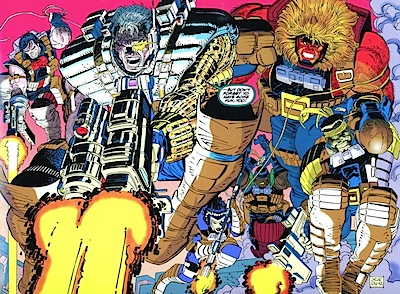
And then came Kick-Ass. Mark Millar’s choice of the ultimate superhero crasftman to draw an ultra-violent exploration of the ugly real life ramifications of superhero tropes was a typically canny one, and Romita responded with work that was expressive, explosive and disturbing. The first Kick-Ass film was a surprise hit, its two leads becoming iconic in their own right, and the graphic novel has been one of Marvel’s bestsellers for years. Romita has been on board for Kick-Ass 2 and 3 various Hit Girl prequels, and he’s reaped his own share of attention from the media storm that seems to follow Millar wherever he goes.
Although the Kick-Ass 2 film opened to a diminishing box office and reviews, it opened just as Romita’s contract with Marvel was up. And now, the loyal company guy has a world of new chances in front of him. He’s been doing a series of interviews at various websites, and although they cover similar territory in what Romita has planned next, I jumped at the chance to talk to an artist in his unique positions: an artist who exemplifies the old school career of company and character loyalty facing the new world of creator owned comics, creator participation and media rights. I interviewed him the day after we had both attended a screening of Kick-Ass 2 in Manhattan.]
THE BEAT: John, I saw you at the Kick-Ass screening last night, but you were too far away to say hello to. I think the Hit-Girl vs Mother Russia fight scene was maybe the greatest superhero fight scene I’ve ever seen in movies
JR JR: That was dope. It was a really good fight scene. I agree with that, quite a bit, I actually hoped it would go on longer!
THE BEAT: I want to come back to the movie and talk about your reactions to it a little bit but, I’m grateful for the chance to talk to you at this time when you’re going through your contract negotiations, because it definitely touches on a lot of the issues I cover on my website regarding creators and how to negotiate a career. Just so I understand, you were under contract [to Marvel] for 7 years?
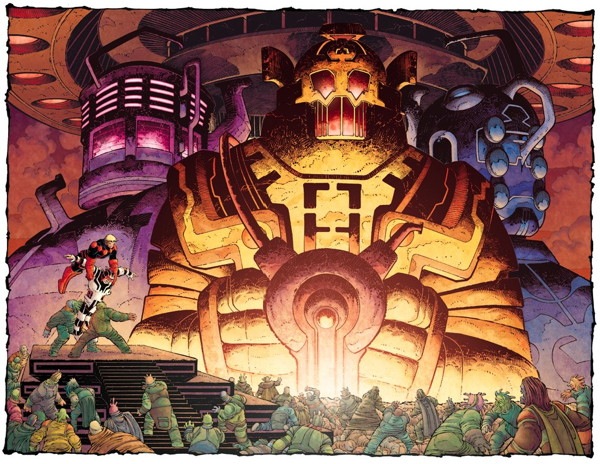
JR JR: Well, I’ve been on the contract for 37 years, but the last seven under one contract, correct.
THE BEAT: That is a significant amount of time. You worked for Image during that time (Gray Area), but [otherwise] for Marvel? Without digging into contract matters which are only your business, what is it about this period that makes re-signing the contract more open to question? Are there issues that are more important to you now that make contract negotiation more of an issue?
JR JR: That’s a great question. It’s just the flexibility of being able to do both. Work for hire and creator-owned work, simple as that. And there’s no tension, there’s no contention with any of the companies and anybody in particular, it’s just a matter of trying to find what makes me completely happy, and also satisfies whomever I sign with, or whomever I will work with. Because I don’t know what kind of contract I’m going to sign. My lawyer’s going to work that out. Everybody that I’ve spoken to, writers included, knows what I want to do which is a little bit of everything, while I’m still able to do several things at the same time. I want to be able to explore the creator owned properties but I’m not going to leave work for hire. I think, as an artist especially, abandoning that which made you comfortable in the business, or at least gave you a reputation in the business, I think that’s a mistake. I’m not going to just all of a sudden say, I don’t need this anymore, I never had that kind of thought in my head.
As a matter of fact, when I was younger in the business I was always told stay on the newsstands, which is an antiquated comment, but stay there and you will be fine. Don’t disappear, because out of sight out of mind. Now that’s a little bit of an oversimplification, but the truth of the matter is that I don’t want to disappear from view, haters and all, because it keeps me on my toes. Let’s just put it that way. I look forward to doing all of the above, and short of doing dialogue work, I will do all the stories. I’ll come up with the stories and then connect them with quality writers that enjoy working with me and eventually we’ll find a happy medium. It’s just a matter of crossing the Is, and dotting the Ts, to slaughter a metaphor [laughter.]
THE BEAT: That’s great. I’m curious, obviously 7 years is a long time and you have been happy at Marvel. I’m guessing that when you signed that last contract, I don’t know if you were even talking about doing Kick Ass with Mark [Millar] at that point.
JR JR: Correct.
THE BEAT: And so the entire length of this contract you’ve had all these other experiences going on. You grew up in a comic book family, and obviously were given the advice that was, you know you need to do this, you need to do that. I’m just wondering about the evolution of your thinking about this. Until recently it seems that for artists it was always “doing your own thing is so risky, it’s so dangerous” and then over the past few years, it’s become much more of a path not only to personal satisfaction, but to financial success. How did you decide that this was a step that you wanted to take? It might be your destiny?
JR JR: I honestly didn’t think of it as that even when I started doing Kick-Ass, and I don’t think of it as my destiny now. And it’s not that I’m hedging my bets by staying in work for hire or mainstream work. I enjoy every bit of the work I do, regardless of what it is. Always enjoyed working for Marvel, I would enjoy working for DC, should that happen—again, my lawyer’s working it out, it’s just a matter of finding the balance that makes me happy. I loved the job and it’s as simple as that. Never at one point when I started working on Kick-Ass did it occur to me that I could just drop mainstream work and just go into creator owned. I don’t have that kind of hubris to think that I can go all in. I genuinely love the characters that I’ve worked on and love the characters that I’m going to work on. There’s no, the contract expiring at Marvel is just a timing thing and it’s just a matter of working out another contract [that has] all of what I want to do in it.
So there are no problems with anybody. I have no ill feelings towards anyone, and if it works out that I get to create [a property] with someone then I’ll sign with that person. It’s very simple to me and I’m not concerned and my lawyer’s working it out. As long as I get to do what I want to do in my heart as well as what I should do.
THE BEAT: You’ve mentioned working for DC Comics, which you’ve never done right?
JR JR: Correct.
THE BEAT: Now do you think there is a different approach to Marvel and DC comics? I mean were you to get that first job, do you think there’s any difference in how they’re drawn?
JR JR: Honestly I have no way of knowing how that would turn out. I do know that this, all the years I’ve worked at Marvel, all the things I worked at Marvel, all I can imagine was that if I do this story and I do the process that I’m comfortable with, then I worry less about the company and I concern myself with the story. And that’s all I can do. I can’t control business transactions and business sense, I just want to do a quality story with a quality writer, or come up with a great story that a writer can enhance. So it’s more about the story than it is about the company. If the character has a good story in it, that’s good for me, it’s simple as that. I don’t want to get to oh wow, it’s a big political thing, it’s not. Any comment I ever made at a bar about DC it’s always been tongue in cheek. [laughter]
Any two competing companies are going to do that. And it’s always been with a smile and a nudge, because I know all the guys over there and I’ve worked with some of them before. It’s never been a problem. So I joke and they joke. There’s an ex-Marvel editor in chief over at DC now, and we joke when we speak too. I have no problem with it. The reason I stayed with Marvel \was that I love the characters and I’ve been loyal to them. I have no idea what the future holds, but I’m not concerning myself with it. My lawyer’s going to handle it, and I look forward to whatever is worked out.
THE BEAT: Right, well you seem to be in a very good position right now. Again, there’s been a lot of discussion on the websites about how many older comic creators maybe didn’t make the best decisions and, you know, maybe didn’t have the money for a lawyer at some point. This may seem like an odd question, but have you felt secure in your career? I know Jack Kirby, and others of his generation, were so concerned with working and worried about providing for their families. Do you feel like you’ve been well taken care of? Is this an industry for people to feel secure in?
JR JR: Only if you’re willing to work hard for it. It’s very simple. It’s supply and demand. I could say that I’m only secure in the knowledge that I know I can produce. And I have no false notions about whether or not somebody’s going to love me tomorrow or not which gives me the impetus to continue to work hard. Anybody’s that’s been in the business a long time knows it’s an ebb and flow and you can’t rest on your laurels. There’s been a lot of people that have come in and have made a big splash and they can’t maintain it. There’s been a lot of guys in my generation that have maintained a quality career. Financially, I’m comfortable because I’ve been working hard. Make a dollar or make a $100, as long as you spend a little bit less than what you make you’re ok.
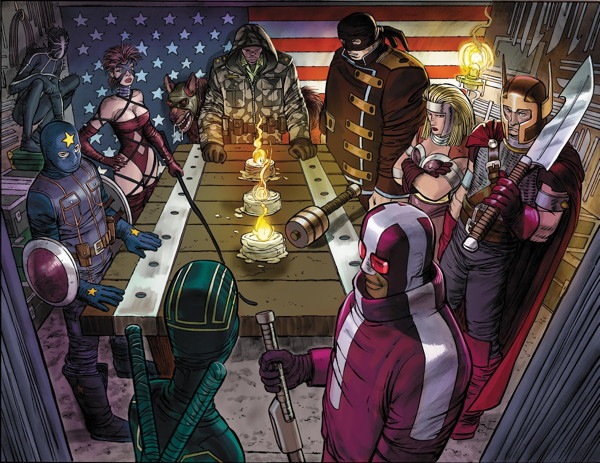
Obviously the security in my own mind is that I can still do work and I know how to handle the business, so to speak. But there’s still considering the unknown and the unknown is coming up with new ideas, doing something new and different. But that has nothing to do with companies, it’s within your own skin. I’ve been doing it a long time and I know it’s difficult to come up with something new and different, but that’s why Kick-Ass is so amazing, it’s new and different. There’s two things, I have a big body of work, I also have a big body of haters. And you have to consider that not everybody’s going to love you. So that’s where I get my urge to continue to get better. And part of getting better is trying something different which is where creator owned comes in. I’ve never had a concern about working hard. There’s a concern that I find the right things for me and that means getting projects and coming up with ideas that will be successful. It’s a crap shoot. I’ve been on commission for 37 years, if I don’t produce work I don’t get paid. I’m given the opportunity to come up with ideas, but any money I make is based on sales. If my work doesn’t sell I don’t get paid! It would be ludicrous for me to ask for hard money with out having to produce. It makes no sense! It’s like a baseball player saying give me 10 years of salary for what you think I can do, and then suddenly saying, I don’t feel like working hard anymore, I got my money. It’s not going to happen. This business keeps me on my toes, the idea is to try something new and different.
THE BEAT: I know you’ve been you’ve been in talks with a lot of writers, you know, Neil Gaiman, Mark Miller, Mark Waid, Robert Kirkman, Right now you’re in a transition where you’re weighing all these offers. Do you have any thoughts about working with writers of this caliber?
JR JR: Oh listen, all of the people I mentioned are guys that I’ve had discussions with about doing projects with. Nothing is in cement. When I mentioned their names it’s because I want to work with them. They’re brilliant writers, all of them, which is why I’d love to be able to do something with any of them. I’ve been working with Mark for the last four years on Kick-Ass, and when I finish Kick-Ass, I’d like to be able to fill up that gap with a new property. And I mentioned the names of the writers as people I’ve had discussions with. There’s no real big revelation about adding any of these writers to a project, but I think anybody would be stupid not to want to work with them. And I may have my stupid moments, but I’m not that stupid! [laughter]
I asked to work with these guys and some of them are interested and I am interested in what they have done and it’s a nice combination of both, but of course nothing has been written in cement yet. And should they all still want to work with me in a year after we’ve developed something that’s wonderful. But I still have to keep my hands in the work for hire realm because listen, I have panic attacks every Sunday night thinking, did I get enough done over the weekend for my editor on Monday morning? I can’t stop feeling that way. I guess that’s what separates me from a lot of people who are not as panicky. I used to do that when school was starting the next day. I had the Sunday night fears, the Sunday night anxiety attack. I still get it and I’m not a kid anymore. I still have the fire in my stomach to get to the deadlines and I also have a fire in my gut to be the best and even if I don’t reach it, I don’t have a problem with having that burning desire. It just means I’m not going to slide back. It doesn’t mean I’m going to get any further up the pole than I am now, but it means I’m not going to slide back.
THE BEAT: I know when I talked to you about Kick-Ass the first time, it was a stretch for you, with the violence. You saw the second movie last night, did you enjoy it?
JR JR: Yeah, very very much
THE BEAT: One of the things that really struck me about it was obviously that many of your character designs were on screen. Kick-Ass in the comics is meant to look dorky, then guess what when you put that costume on an actual person, even if he’s as good looking as Aaron Johnson, it still looks a little bit dorky. How does it feel seeing those characters on screen with your designs or close to your designs?
JR JR: It’s very flattering. There are so many costumes that don’t look like what I’ve done but I do like the combination of both. Dr. Gravity looks close to what I did, Kick-Ass does. Hit-Girl doesn’t really look that much like the costume in the series, but a little bit of everything is involved. Seeing scenes that were taken from the graphic novels [is flattering.] Both directors Matthew [Vaughn] and Jeff [Wadlow] are brilliant creators, so they know what to do and to balance it. I’m flattered and I’m impressed that they bounced from that and do their own as well. Especially after having seen the first film and having seen the second, it made me say, I have to do my best with my own stuff. Jeff did a brilliant job.
THE BEAT: Did you have any input while it was in production?
JR JR: Only as far as I was sending faxes to Jeff of the pencils as I was doing it. He was very very gracious in asking for things that he did. He asked for a couple of things once in awhile, it was more giving him something to look at and maybe to go by. There were some scenes that were directly from the book, and I’m very proud of those.
THE BEAT: As you may know, there’s been a huge uproar recently about something Mark [Millar] said. There were some concerns about how in the comic there is a rape scene and in the movie they did tone it down and–
JR JR: Wait a minute, there was no rape scene in the book. There was an intimation of what could happen and what happened but you never saw a rape scene. It was foul language and it was violence to a lady, she gets hit. But there was no rape scene. I get a kick out of having been sent emails that said I can’t believe you depicted a rape scene in your book [because] it never happened. So I need to clarify that, yes we touched on it, and we came close to it. But we didn’t show it and we would never show that. Yet we did show children getting attacked and that’s rough. I can only qualify this, by first of all, I haven’t seen what Mark has said or written, I don’t know what the controversy is. I just know Mark is a sweetheart and a good man, a good father and a good husband. So I don’t know what he said. If it was taken wrong, so be it. If he said something wrong I’m sure he will correct it. I don’t know what was said. I do know this, I felt uncomfortable about doing scenes about children getting hurt. I felt uncomfortable about the thought of a woman getting attacked. None of which I haven’t seen on television, soap operas, in magazines, and I don’t think that we put anything that was so shocking, but again, I had nightmares the first time I saw a rape scene in a movie, I had nightmares the first time I saw a kid get hurt. That’s me on a personal basis. I can close my eyes and imagine my son or my wife getting hurt and it makes me come to tears. So that goes without saying.
But there’s nothing that we did that was so outrageous and I again, if I had a choice of not showing the children getting shot, maybe I [would do] the scene differently. Mark didn’t ask me to show them getting blown apart like that, I chose that way and again maybe I would do it differently, I don’t know. Second guessing is the worst thing I could possibly do, and I appreciate all of the input into it but again we did not show a woman getting raped, nor would we.
THE BEAT: Fair enough.
JR JR: I don’t begrudge people’s opinions, again you can watch something on TNT or Spike TV or especially on HBO or any cable network or any DVD that would shock anybody in any circumstances. Look at The Girl with the Dragon Tattoo. I can’t watch that scene
THE BEAT: Very unpleasant, yes.
JR JR: So people have to keep things in context and keep things relative. What did Mark say that was so shocking?
THE BEAT: He said that he felt that rape was a means of showing how bad the villain was and he compared it to decapitation, but as it was pointed out, rape is not the same as decapitation. People don’t say, oh what was she wearing when she got decapitated? I think it’s partly a very valid criticism. I think you need to address aspects of rape culture, but Mark says things and a line in an interview should not be the sum total of how he is judged. I think he should be judged on his body of work and his work is sometimes very difficult and [problematic]. It has been very much in the news recently, and I appreciate you taking on all questions here about it.
JR JR: Not a problem. I am involved in it as he is, I did the artwork for it. But again there was no rape scene. It needs to be hit on that there was no graphic rape scene.
THE BEAT: Let me end this interview on an up note. You’re talking about doing your own thing, what’s JR JR’s Dream Project?
JR JR: I have a couple of ideas for properties and I’m going to hopefully connect all of them or some of them to some brilliant writers. It would take a long time for me and a couple of glasses of wine to get everything out on all the ideas that I’ve been writing down over the last couple of years. But I have been taking notes and writing and putting things together for story ideas. The dream projects are these stories that have come from what I have been through, with a little added fantasy. And the reason I love that is because it gives me a little base of reality that I can bounce off of. Gray Area was based on my Catholic upbringing and my fear of walking through life because I was born into original sin. You know, I’m going to go to hell because I picked up a piece of bubble gum from a grocery store without telling the guy when I was 5 years old, that kind of thing. My dream job is to do new comics based on my projects. But my dream job is this job, what I do for a living. I don’t want to have a regular job. I love this. I don’t want to actually have to work for a living, this is too much fun.
[Top photo of the notoriously camera-shy Romita from Sidebar Nation.]


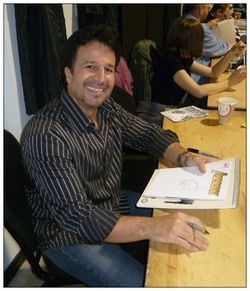
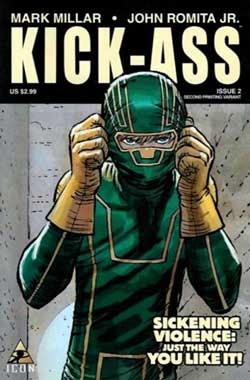
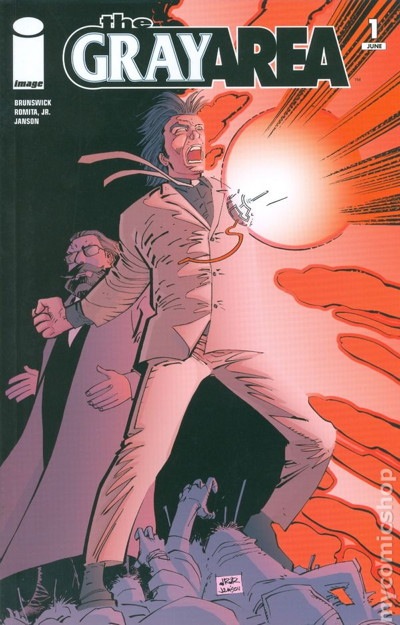
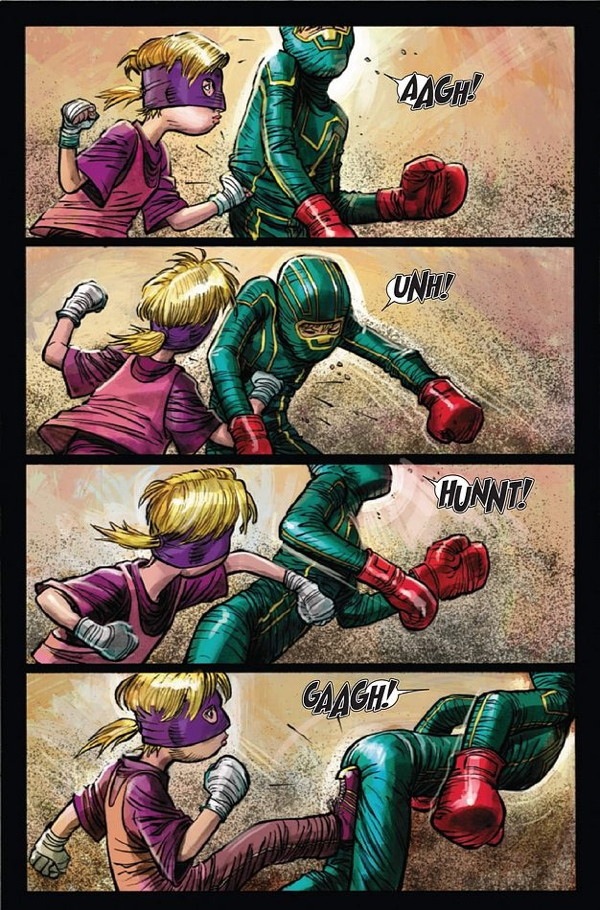
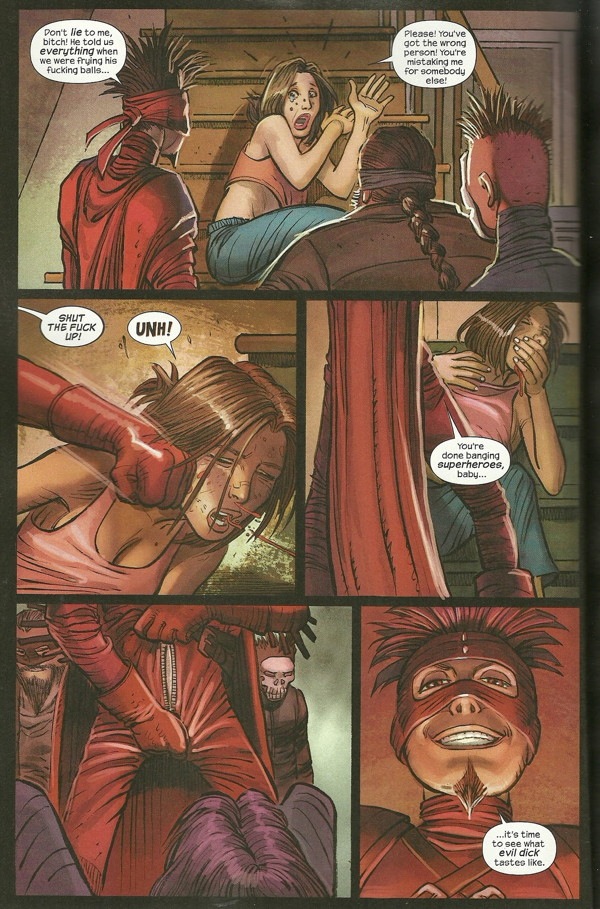
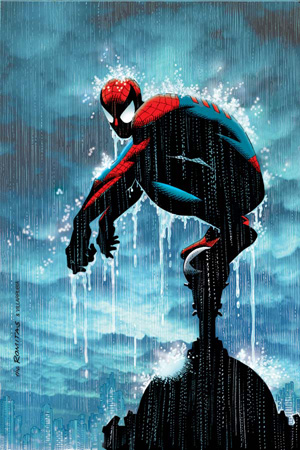


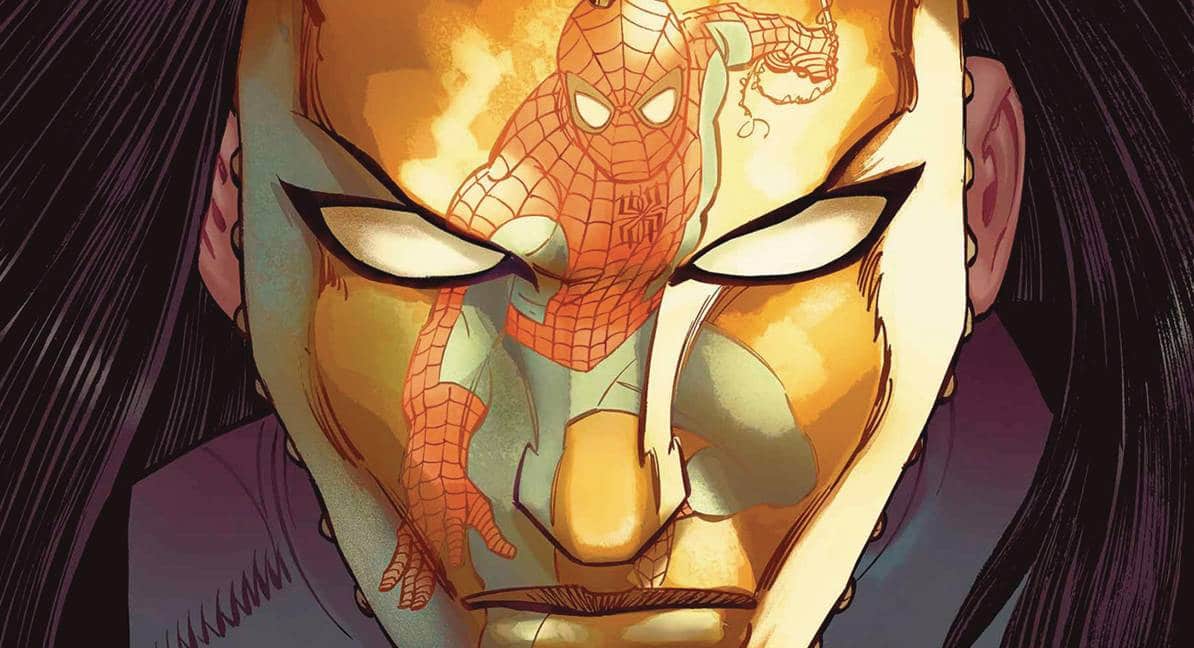


Good for John. I’m glad he has options… work-for-hire, or creator-owned avenues. And he is spot on that you can’t rest on your laurels. I also get panicky about producing enough work and how much I spend versus my income from comics. For many folks it is a lifestyle choice. My books don’t sell much, but then I’m a writer / artist and I live within my means so the small profits I get are not cut up too much.
As for the rape controversy… I see it both ways. Rape, in my opinion, doesn’t have to be at the actual contact of non-consensual sexual activity. If the intention was to rape the person from the get-go, then even the violence and subjugation leading up to it is part of the rape. I know by law that’s actually assault & battery, but (again my opinion) it’s a sexualized assault & battery. But that’s a generalized view that I hold personally.
On the flip side, I also see where Mark is trying to darkly paint his villains. I’ve been there. Bomb Queen had to ratchet-up the sex & violence. Rape is shorthand in that ugly tool kit when it comes to developing nasty characters. Stephen King writes ugly characters doing ugly things too, but his feet aren’t held to the fire as much. I should hope that writers / creators have the ability to explore their work without being wrongly labeled or having the work be attached to them in a personal manner.
It seeems a question is missing (right before JRJR’s “Wait a minute, there was no rape scene…”)
Fixed, although I didn’t exactly get to ask the question.
What a mealy-mouthed answer. In many ways, it’s more deplorable than Millar’s comments. Just because you cut away before the actual rape begins does not mean you didn’t depict a rape. FFS, as an artist (and son of a legend) JRJR of all people should realize that the language of comics is as much as what you don’t show as what you show.
And it doesn’t change the deplorable nature of the story progression either. The “not-rape” is still only there to show what a bad guy the villain is, and doesn’t give a second thought to the victim.
Wow, what a thoroughly disappointing cop out answer from JRJR on the main topic.
So, my major takeaway form this, is that John is a slippery weasel.
A rape scene is absolutely implied (in a particularly horrible context – a violent gang assault) and in context where it doesn’t really belong and in a way that trivialises it.
He seems to take pains to avoid that and deflect it childishly (“No no, well ACTUALLY you see …SNORT…”) rather than face up to it being implied there or try and defend the implication on an artistic basis – perhaps not surprisingly as the case is so flimsy.
It’s certainly occurred in other comics – perhaps most notably in Watchmen – the difference with KA being it comes across as cheap and exploitative. YYMV.
Nope, no rape. Just a little violence against women. no big deal *please note sarcasm*
“my major takeaway form this, is that John is a slippery weasel”…
…who was ably aided by the lack of follow up from the journalist present…”fair enough” indeed…
So what happened after that scene-they went out for coffee? At least have the balls to own your own work. Just because there was no explicit scene (probably because there wasn’t enough room) does not make it all better.
And they wonder why women don’t buy comics.
WOMEN *DO* BUY COMICS!
I expected tougher questioning from Heidi than the fluffy softballs she tossed Romita Jr. Maybe these interviews should be conducted by people who aren’t admitted close personal friends with so many comics pros.
Yes, as others here have pointed out, just because you cut away from a rape scene doesn’t mean no rape took place. JR JR’s answer was a slick cop-out, like something a politician would say.
A review of “Kick-Ass 2” at the film site The Dissolve pointed out something that makes the comics so disturbing: JR JR draws the characters with such big heads and skinny limbs, they look like toddlers. It’s like watching young children butchering each other.
Sheryl and Steve: Yes, women do buy comics, but they’re probably not buying Mark Millar’s rape fantasies.
“I should hope that writers / creators have the ability to explore their work without being wrongly labeled or having the work be attached to them in a personal manner.” – Jimmie Robinson
I couldn’t say it any better myself.
Mark Millar has had quite a long while to “explore his work.” Any labels that get applied to him are based on years of evidence.
Remember how Heidi grilled the guy standing in line at Comicon for daring to say suggest that, in his opinion, Twilight fans were the reason for long lines? She would not let him away with that.
But JRJR dismissing his implied rape scene? Oh, fair enough. Nothing to see here.
Thanks for this interview, Heidi.
I’ve long admired both JR’s work and his work ethic. he is one of the classiest guys in the biz. I wish him all the best with whatever he chooses to do creatively because I know he’ll pour his heart into it and it’ll be fun to receive as both a fan and retailer.
“there was no rape scene in the book. There was an intimation ” Do tell. Please clarify for us… what did happen next?
“I haven’t seen what Mark has said or written” because it would be much too hard to Google. Might take seconds.
“if I had a choice of not showing the children getting shot, maybe I [would do] the scene differently. Mark didn’t ask me to show them getting blown apart like that, I chose that way and again maybe I would do it differently, I don’t know.” Does he even hear himself? Does he even understand how screwed up he sounds? It’s like all the worst stereotypes non-fans have of us.
This guys is a sleaze-bag.
“WOMEN *DO* BUY COMICS!”
– said a man named Steve.
I’m likely never going to read Kick Ass 2 (the first wasn’t my cup of tea), so saying anything about it would be ridiculously unfair.
My question is why do interviewers seem to frequently apologize to comic creators for whatever controversey they’re asking about? Why is The Beat paraphrasing what Millar said, putting it into her own context, explaining who should be judged for what, and then appreciating the person for answering a question? Why not read the exact quote and say something like – this was in reference to a scene you drew, what’s your take? At least JR Jr admitted he was just as responsible as Millar for the scene in question.
And why the Hell is there so much rape in comics? I could understand if the majority of these books were written by women or featured male-on-male rape and the creators were trying to make a statement on something in their life, but often it seems these scenes are written by men for the sole reason of showing the villain of the piece is evil.
Chris Hero said: “And why the Hell is there so much rape in comics?”
Laura Hudson wrote that rape is used in comics to “piss off” the male characters, and prompt them to take revenge on the bad guys. The impact rape might have on the victim is given little thought. It’s just another plot device to most writers.
Here are some of her other thoughts about comics’ attitudes toward women:
http://comicsalliance.com/starfire-catwoman-sex-superheroine/
So, I want to be clear here on a few things before I get into the issue of what was said in this interview. 1. I know Heidi personally and have written a few pieces for The Beat. I think she tries to be as fair as she can, but it is tough when we know the creators we’re talking to personally. I’ve edited comics for over 10 years and there are people I know and consider friends as well as colleagues who have written or said deeply problematic things, and it would be an abuse of my relationship with them to exploit it in an interview. 2. I don’t think any subject, however awful, is out of bounds in comics, prose, TV, whatever. It’s how it’s depicted, whose pov, and why, that’s essential.
My issue with the answers here for the scene in Kick Ass is that it’s a quite a bit of a cop out to act like the direct implication of that scene, which is clearly that rape is about to happen, is automatically less or not problematic because the actual rape wasn’t shown explicitly. This is true, but we know it’s going to and it’s still being used, quite obviously, to show the villains are bad and not much else. While a graphic depiction of the rape would be “worse”, it still uses the same trope without that element, and it still exists largely for shock value and, in my opinion, lazy way to make someone evil. There are lots of other ways to do that that don’t include rape, implied or otherwise. It’s not like we don’t know exactly what’s going to happen after that line is uttered. I mean, it’s really specific. Not showing it in actuality doesn’t make it somehow not problematic and worth discussing.
Further, the example of The Girl with The Dragon Tattoo is interesting because yes, that scene is much more explicit in the book and film. But. It’s also not used merely to shock, it deeply informs Lisbeth’s character, but unlike a lot of rape scenes…does not define her and everything she is. Nor does it function to motivate a male character or just to establish her rapist as evil. Especially in the context of the series, it’s about much more than that, about entrenched misogyny, about a system that is deeply messed up, about rape culture, and about how Lisbeth’s navigates the world and deals with the things that happen to her. While it certainly motivates her to seek vengeance for herself, even that was evident in her character before, that she has a very unique and distinctly personal sense of justice. And, even though this is a thing that happens to her, and it matters to her character, it isn’t the sole defining even in her life. It’s not handled in a stereotypical way. It also isn’t depicted, in either book or film, as anything other than awful. The book in particular is very matter of fact, almost clinical, which I think had a lot to do with the author’s reporter background.
The difference between those scenes in TGWTDT and Kick Ass is pretty stark. They function for entirely different story and character reasons and the pov is completely different. So, at least to me, the scenes in TGWTDT end up being “better” portrayals of violence against women because they are thoughtful, careful, and yes, graphic. But in a way that is attempting to show a more complete picture of the issue, and as an event that happens to a character without being the entirety of her motivation or life.
Ultimately I think John Romita Jr. is a very talented, hard working creator. And I can tell that this particular subject is difficult for him and makes him uncomfortable, which I totally get. But it’s a nuanced issue and just because the comic is less graphic that other mediums, doesn’t mean it necessarily handled it “better”. In fact, it was so superficial and flippant that, to me at least, it’s much worse.
First, everything Mariah said about Girl With the Dragon Tattoo is dead-on, and second, Stieg Larsson’s explicit scenes of violence against women are ALSO viewed with suspicion by critics. That just shows how sensitive the issue is and how important it is to handle it with intelligence and compassion; it’s such a powerful trigger that it activates a more intense analysis and criticism.
The thing I don’t understand is why Millar and Romita are just unable to say, “Huh. I never thought of it that way, and thank you for pointing it out.” You’re allowed to change and learn new things about the world, especially as an artist; it’s almost your whole job. I still remember when I first learned about the male gaze in college; the first thing I did was examine my own writing, at which point I immediately discovered that I had never written a female character who existed for any reason other than furthering the male lead’s storyline. It changed the way I wrote forever. That’s OK to do, superhero genre creators!
I’ve never read the book(s) in question, but my take on Mark Millar is that he is a provocateur who relies on heavy-handed storytelling. He also seems genuinely disinterested in the subtleties of the ramifications his characters’ actions. That his views on rape would lack nuance is hardly surprising.
Regarding JRJR’s response, he seems to be trying to say that having the act happen “off camera” equates with the scene not being present. That is, they did not “film” the rape scene. Hence it is not in the book.
Does this satisfy those critical of the use of rape in the story? No. Would it have been more objectionable if the scene happened “on camera”? Yes.
Those being critical of Romita’s answer should also look at the interviewer. The questions posed allowed the response. If the interviewer had followed up by respectfully acknowledging John’s point and then asking about his thoughts on using rape in a story even when the act occurs off camera we might have gotten something much more insightful.
JRjr is my favorite Big Two artist but I was disappointed when I was browsing through the Kick Ass 2 harcover while killing some time at a Books-A-Million a few weeks ago. I quit the original series three issues in because my distaste for Mark Millar’s writing won out over my love for JRjr’s art. I should have known better but I decided to give the book a look and sure enough how does Millar top a scene where his villains just killed a bunch of kids on the street? With a gang rape. I was pretty bummed that JRjr was involved in any form with the scene.
Two more things:
1. Despite the interview spending most of its time on creator owned opportunities, work for hire, managing one’s career and writer-artist collaboration most comments are about the rape scene.
2. It would have been nice if the interview had covered more territory. This guy has had an amazing career.
Okay, so TECHNICALLY there weren’t panels in that comic showing the young woman being raped…?
There’s still a panel of a guy punching a woman in his face, unzipping his pants and telling her he’s going to put his penis in her mouth. That’s sexual violence, and while I understand JRJR’s distinction, I don’t think it’s a valid one.
Yes, to Caleb’s point, the concern isn’t that the actual rape is shown on the page, but that it’s in the story. And it’s not like it’s so off-panel that you just hear characters talking about it afterwards — the woman is drawn to be absolutely terrified, then punched in the face with blood spraying out of her mouth, then holding her bloodied mouth in shock and pain, then that horrible low angle shot of the pants getting unzipped. I mean, what else does Romita think COULD have been shown there?
The worst part is, as everyone in the world aside from the creators has pointed out, the point of the page is just to set up the villain’s hilarious cool punchline at the end, not to explore the horrible consequences and impact of what just happened to the woman.
I find it funny that “Why is there so much rape in comics” is generally only connected to male-on-female sexual violence. For all the grief Moore gets, one of his most notable is Kid Miracle man, a young boy gang beaten and raped (gang rape implied but not shown?) boy older boys. And in Rick Veitch’s sidekick series, we have a “superheroine” that castrated male victims and collected their dismembered balls in a pouch. And throw in to that is a now just as common as rape “chopper sick balls” gag that ran in everything from Preacher to — yes — Kick Ass 2.
I mean let’s have the whole conversation. Men are getting — and have gotten — just as bad as the women.
I don’t think it’s misogyny alone, but rather the need by creators to continue to shock.
Silly but True
I am staying out of the conversation about Kick Ass 2 because I haven’t read it or seen the movie. I didn’t much like the first comic, and I avoided the sequels.
I am a huge John Romita Jr fan. I have a signed Daredevil print hanging on my living room wall. I yearn for the day when he draws Spider Man again. While other artists may be prettier, few draw action as well as him or can tell a story as well.
I am delighted to see that he has some options. I think that Marvel would be very, very stupid not to make him a reasonable offer which allows him to do his creator owned work through ICON.
For me, JRJr leaving Marvel would be like the Ravens leaving the Tower of London.
Context is nearly everything in deciding how to interpret a rape scene. An implied rape scene is as vile as a graphic one, if the rape scene is used as a mere plot device. If the purpose of the scene is to have the hero angry, simple assault is as (in)effective as rape. If the rape is part of a character-driven, vs. plot-driven, story, then the victim’s reaction to the rape is a major reason for the story, although having the victim set out to wreak revenge (e.g. I SPIT ON YOUR GRAVE) makes the story plot-driven.
Sexual violence can be as tasteless in a satire as it can be in non-satirical material. A satire isn’t automatically successful as a story; the satire needs a target. If some writer decided to write a story that had Captain America raped–context would be everything.
Rape of women doesn’t shock people any more, because as a plot device, it’s a cliche. All it does is offend.
SRS
Mariah and Jesse: I love Lisbeth Salander, but for a guy who hated violence against women, Larsson sure liked writing about it. I view the Millennium trilogy as one big Mary Sue novel where both Salander and Blomqvist (crusading journalist who can still get any woman he wants into bed) are both Mary Sues.
I didn’t much care for the Fincher version of the film on a contextual level and his treatment of female characters (and maybe even Rooney Mara) leaves a lot to be desired. But yes, it is shown to be deeply disturbing and traumatic fo the main character, who nonetheless overcomes it in the course of her own heroic journey.
As far as I can tell, I’m the only interviewer in Romita’s recent press tour who actually asked him about the controversy directly—something he hadn’t even heard of of because I guess he’s not an online guy.
Is it reasonable to expect a thoughtful, nuanced answer to Heidi’s question given the parameters of this interview? It seems like an issue a sensitive as the depiction/implication of rape needs to be set-up a little better, especially if it’s going to be on-record.
Of course, sometimes you need to ask the “gotcha” question, but if you’re an interviewer and you decide that it’s appropriate, then it’s on you to follow it up.
So how should this scene have been written/depicted?
I remember the West Coast Avengers storyline of Mockingbird going back in time, and being brainwashed. It was so oblique, I didn’t even realize there was sexual assault, and couldn’t quite grasp why Mockingbird was so angry as to kill the Phantom Rider. (Was the aftermath handled well?)
Soon after, the Ms. Marvel/She-Thing storyline seemed better written.
Then there was The Hood assaulting Tigra, which I only read in Avengers Academy.
Is there a Women-In-Refrigerators aspect at play here?
Does this sort of thing happen to male characters? (Aside from the retaliation directed at The Hood, that is.)
That depends on the audience, doesn’t it? One factor that makes rape of a woman a crime to be avenged offensive is the assumption that readers are males who identify with the often hyper-masculine hero who avenges the crime. The focus is on the anger of the hero who has his possession damaged, rather than on the psyche of the woman who’s been raped.
If the rape is a mere plot device, it’s reasonable to question why the story was written. Who benefits from it, besides the people who are paid for it?
I thought the WCA storyline was handled very well. I’d rank it second-best among AVENGERS storylines, with only the Serpent Crown and Kang storyline in Englehart’s AVENGERS better. Too bad Englehart wasn’t able to finish the WCA storyline.
SRS
” It was so oblique, I didn’t even realize there was sexual assault, and couldn’t quite grasp why Mockingbird was so angry as to kill the Phantom Rider. ”
I was 11 when that issue came out and it didn’t dawn on me at the time (I’m glad it didn’t) and in my naïve mind at the time, I just figured he was keeping her around under his control until she fell in love with him. The issue with Sharon Ventura, I always assumed that she was violated much like Rogue was in Genosha, pawed and fondled but never actually raped. I never thought that the Purple Man would be a serial rapist until Bendis introduced the idea. I’ve just always felt that rape should never be used in a super hero comic.
So are we all longing for the day when simple spousal abuse was as bad as it got?
But even Shooter said that was never supposed to happen: http://www.jimshooter.com/2011/03/hank-pym-was-not-wife-beater.html?m=1
Sometimes the “woman in refrigerator” moment is the result of a miscommunication and imminent deadline?
Add me in to the crowd who never saw Mockingbird’s rape in my original reading of WCA.
But, you know, I think that legitimizes JRJR’s answer. He’s an artist. He’s primarily responsible for what is on the page. The moment we start talking about “reading between the lines,” that line becomes blurred. His art can imply all sorts of no good (and remember, he’s not necessarily even responsible for the clarifying words that contextualize his art), but in this case, it was us — the reader — who is free to assume the best, or worst outcome. I have no idea regarding the extent of his “creator role” relative to Millar. But, I’m willing to excuse to a degree an artist who didn’t draw a rape from the accusation that he drew a rape. I’ll grant you, he did know what was occurring. But, then so do readers who buy Kick Ass **TWO**.
Silly but True
And RE: Purple Man as rapist. Marvel’s Alias was a MAX title. So again, who the hell knows what we’re going to get except count on some gratuitous T&A and/or violence.
One of the downsides to linking “adult” (in the entertainment industry’s sense) stories to a guy created by Stan Lee in the 60s. Mind you, I recall one old story where he mind controlled a woman into being his wife. I don’t recall at the time how explicit the details were of the original story (maybe this was retroactive Bend is flashback?), but she did get pregnant (I think this became Purple Girl). Let’s call that what it was: he raped the mind-controlled woman. So I guess that’s been dealt with. But then the whole nature is creepy: he uses pheremones — sexual chemicals — to control wills. Prior to Bendis I agree, it was more the “Dracula”/seductive implicit angle that always seemed to be played up. But mix Bendis with MAX, and all doubt gets removed. Dr. Light would suggest a similar thing occurs when you mix Meltzer with events.
Silly But True
Heidi: Having read the Millienium Trilogy I think using the word “like” to describe the writing on violence against women is a little too far. I don’t think he liked writing about it, I think he felt it was important. When reading it, the fact that Larsson was a reporter comes across very strongly. Violence, sexual or otherwise, is described matter of factly, not sensationally. Even if the acts themselves are brutal and horrible (which they generally are) the way they’re written about isn’t. I personally love the Fincher version because I think he got Lisbeth as she was originally written much closer than the Swedish version. Lisbeth, however, deserves her own epic post, she’s such a complex character. I’ll give you Blomkquist as a Mary Sure, but not Lisbeth. She’s -extremely- flawed, judgmental, and while she’s certainly good at certain things…human interaction she is not. That makes her very mucb not a true MS. Or if she is, a really narrowly defined one.
I think it’s possible to read TGWtDT in so many ways, because of the characters, because of the issues being addressed and how. Is Lisbeth sexualized or exploited in the story, or do we think she is because a female character who owns her sexuality is so rare it’s difficult not to view her through a flawed lens. The books are imperfect on a lot of levels, and I doubt there’s any way to explore violence and rape culture “perfectly”. Which is one reason why I think Larsson’s take is, at the very least, one of the most complex and nuanced attempts.
All of which is to say: as a story topic, sexual violence is both taboo and exploited in various mediums. I don’t like it as a topic, but I appreciate when it’s handled with care and thought. Hence why, however anyone interprets it personally, I think it’s clear why it “works” better thematically in TGWtDT than Kick Ass 2.
Synsidar said:
“That depends on the audience, doesn’t it? One factor that makes rape of a woman a crime to be avenged offensive is the assumption that readers are males who identify with the often hyper-masculine hero who avenges the crime. The focus is on the anger of the hero who has his possession damaged, rather than on the psyche of the woman who’s been raped.”
And if it’s a female hero who does the rescuing, what then? I assume you include the “often” because you’re aware that sometimes heroines rescue other females. Is it only a non-possessive act if a woman does the rescuing?
I enjoyed Mariah Heuhner’s response, even though I disagree with it, and have quoted small parts in my essay on the subject.
http://arche-arc.blogspot.com/2013/08/conjunction-junction-meet-violation.html
I will reformat to paraphrase if necessary, but I’d rather keep the quotes as illustrative of the argument’s focus.
Oh, and then there was She-Hulk’s experience with Starfox/Eros:
http://en.wikipedia.org/wiki/Starfox_(comics)#Allegations_of_sexual_assault
“If the rape is a mere plot device, it’s reasonable to question why the story was written. Who benefits from it, besides the people who are paid for it?”
Yet should that not apply to all violence, not just sexual violence against women (and I make note of the latter because none of the complaints ever mention sexual violence against men)? Kick-Ass is littered with acts of violence that many people experience in real life and are likely triggered by seeing, yet no one takes issue with that, which seems oddly hypocritical.
More curious is the lack of objection to the depictions of sexual violence against males in the comic. For example, Kick-Ass is sexually tortured in the first volume, to no one’s complaint. The cover for second issue of Kick-Ass 2 depicts a man being bitten in crotch by a dog, and this scene is depicted in detail in the book, again to no one’s complaint.
I think this argument against the use of sexual violence as a plot device would have more merit if it were not so politically driven and sexist in nature, and also not so deliberately blind to the more frequent depictions of violence against male characters.
And for full disclosure, I am a male survivor of sexual violence and a victim advocate. I have no problem with Millar’s use of violence because Kick-Ass is satire, and I expect such extremes.
Do the fates of She-Hulk– and by extension, Mockingbird– connote a form of rape without what the average person automatically conceives to be “violence?”
The implied sex scene involving Eros, aka Starfox, and She-Hulk in AVENGERS #234 wasn’t written as rape. That was a reinterpretation. In the issue, She-Hulk suggests a date and, later on, is shown waking up in bed, alone, while Eros is in the shower.
In the WCA storyline, the Old West hero, Phantom Rider, used a drug to control Mockingbird. The storyline worked as well as it did because the focus was less on the implied rape than on the reactions to it. How was Mockingbird going to have the Phantom Rider punished? She couldn’t turn him in to law enforcement agents. She let him fall to his death, not anticipating that his spirit would survive him and cause trouble for her decades later. Mockingbird’s pragmatism conflicted with Hawkeye’s principles.
SRS
The context in which a rape scene occurs always matters. If the purpose of a rape scene is only to anger the male hero, then why use rape when other forms of violence would work just as well?
As for KICK-ASS’s satire, how successful is the satire if intelligent readers don’t recognize it? Back in 2010, Spencer Ackerman posted a guest essay by Erin Polgreen re Millar:
Judging by the reactions to Millar in 2013, nothing’s changed.
SRS
Yet does that not imply that the context does not matter with other forms of violence? Are you saying that it would be fine for writers to have a villain mutilate a boy to anger the male hero? Also, since the complaints are about the potential triggering effect the depictions might have on rape survivors, should writers not also worry about triggering survivors of other types of violence? For instance, should writers avoid depicting buildings blowing up in order to avoid triggering 9/11 survivors?
I agree that context matters, and I think the context in Kick-Ass makes the complaints moot. The people complaining appear to think raping a woman is the height of evil. Millar concurs, and decides to have his villain commit that act to show how evil the villain is. If the villain committed another form of violence, he would be committing a lesser evil, which defeats the purpose of the scene. It would be best to have him commit the worst act one can think of in order to show his immorality.
Quite, actually. One of the hallmarks of satire is tricking people into thinking you are serious. Johnathan Swift’s A Modest Proposal comes to mind. When it works, it shows that the reader is not actually paying attention and often reveals the person’s inherent biases, which seems to have happened to Erin Polgreen.
I was inquiring as to how readers here defined those situations of what might be called “coercive sex,” not how the writers of the stories viewed them.
Does anyone care to answer the question I posed re: the “possessiveness” theme as it might apply to heroines rescuing ordinary women from rape or other assaults?
SRS said:
“In the WCA storyline, the Old West hero, Phantom Rider, used a drug to control Mockingbird. The storyline worked as well as it did because the focus was less on the implied rape than on the reactions to it. How was Mockingbird going to have the Phantom Rider punished? She couldn’t turn him in to law enforcement agents. She let him fall to his death, not anticipating that his spirit would survive him and cause trouble for her decades later. Mockingbird’s pragmatism conflicted with Hawkeye’s principles.”
If by “implied” you mean “not directly shown,” that’s correct. But since “implied” can carry a connotation of “being left to the imagination,” Englehart’s script in WCA #23 is pretty forthright, where Mockingbrid tells the Rider:
“You’re a man, Linc Slade! A man who hurt a woman the way only men can!”
I’d guess that doesn’t mean forcing her to cook him breakfast or darn his socks.
Posted Part 2.
http://arche-arc.blogspot.com/2013/08/conjunction-junction-meet-violation_24.html
I could nott refraiin from commenting. Perfectly written!
Comments are closed.